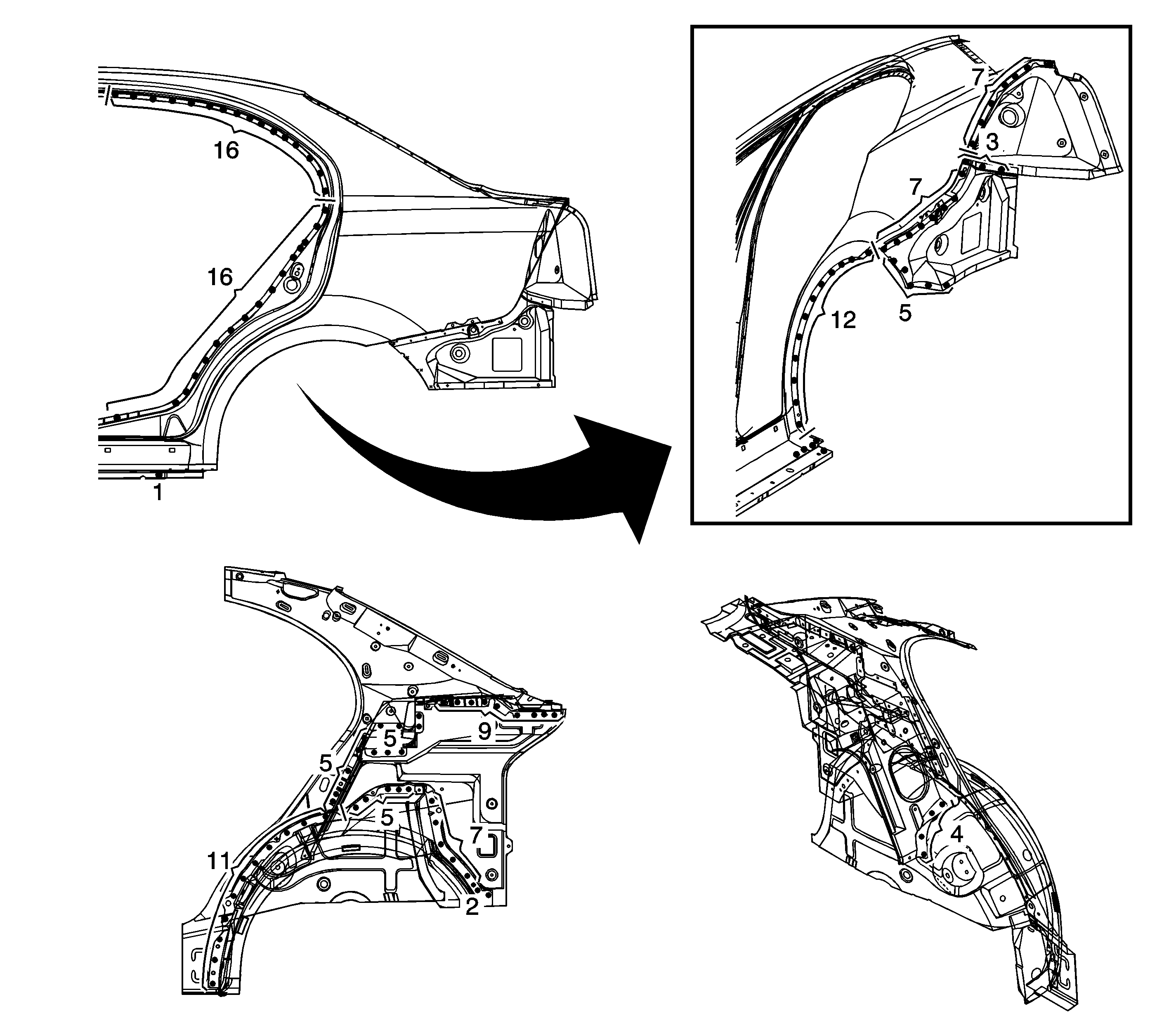Radiator Support
The front panel is joined to the front wheelhouse and front longitudinal. It forms the base for the headlamps and other parts and maintains the rigidity of the front section of the body. Pay particular attention to twists and parallelism and check mounting of related parts when welding.
Important: The number of spot welds needed in each location is shown in illustration.
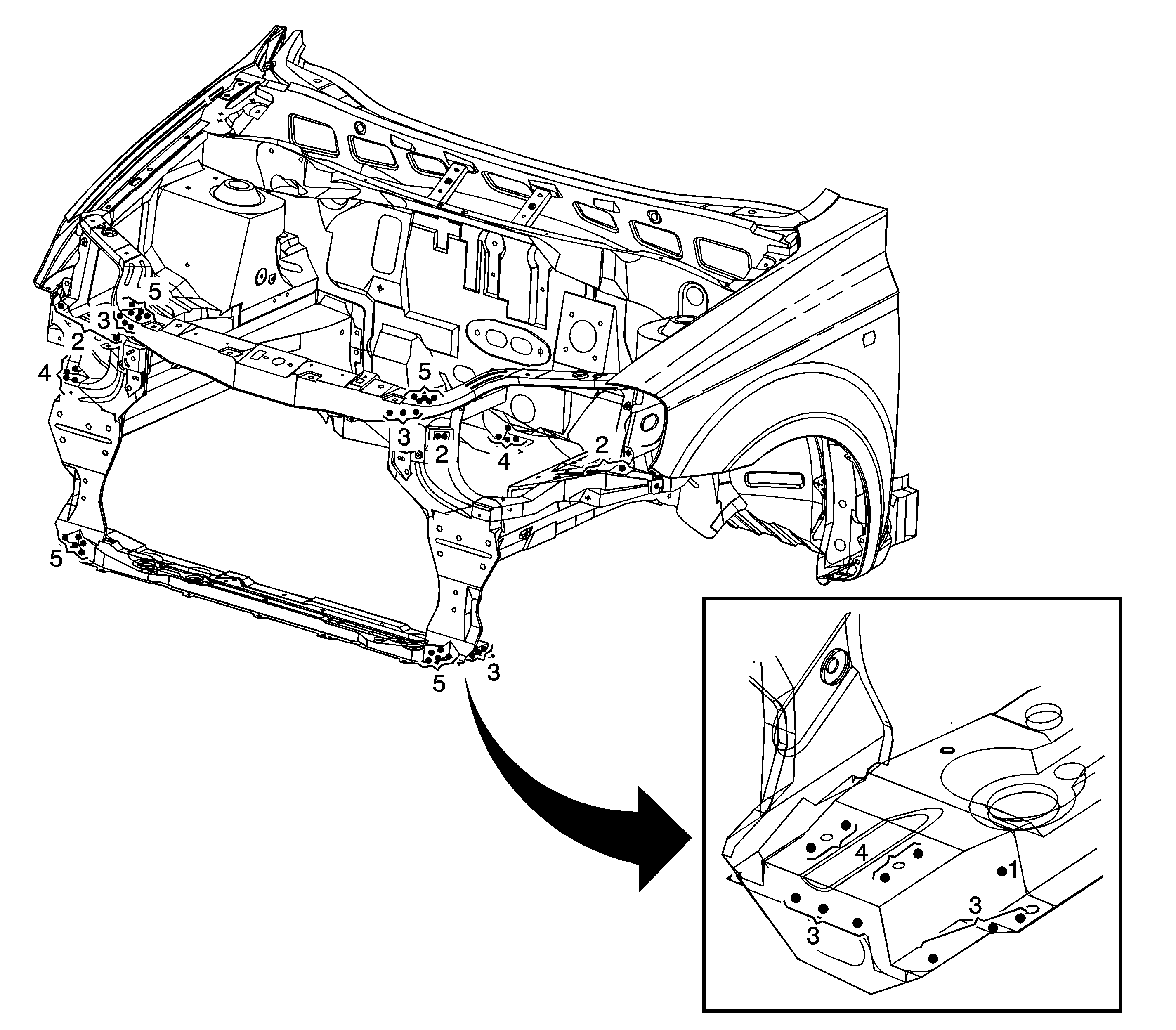
Wheelhouse Panel - Front
The front wheelhouse component is constructed as a unit with the locator shock absorber. Therefore, replacement of the component affects the front wheel alignment. When assembling it, either use a jig or follow dimensions on the body repair chart for positioning. It must be welded carefully.
Important: The number of spot welds needed in each location is shown in illustration.
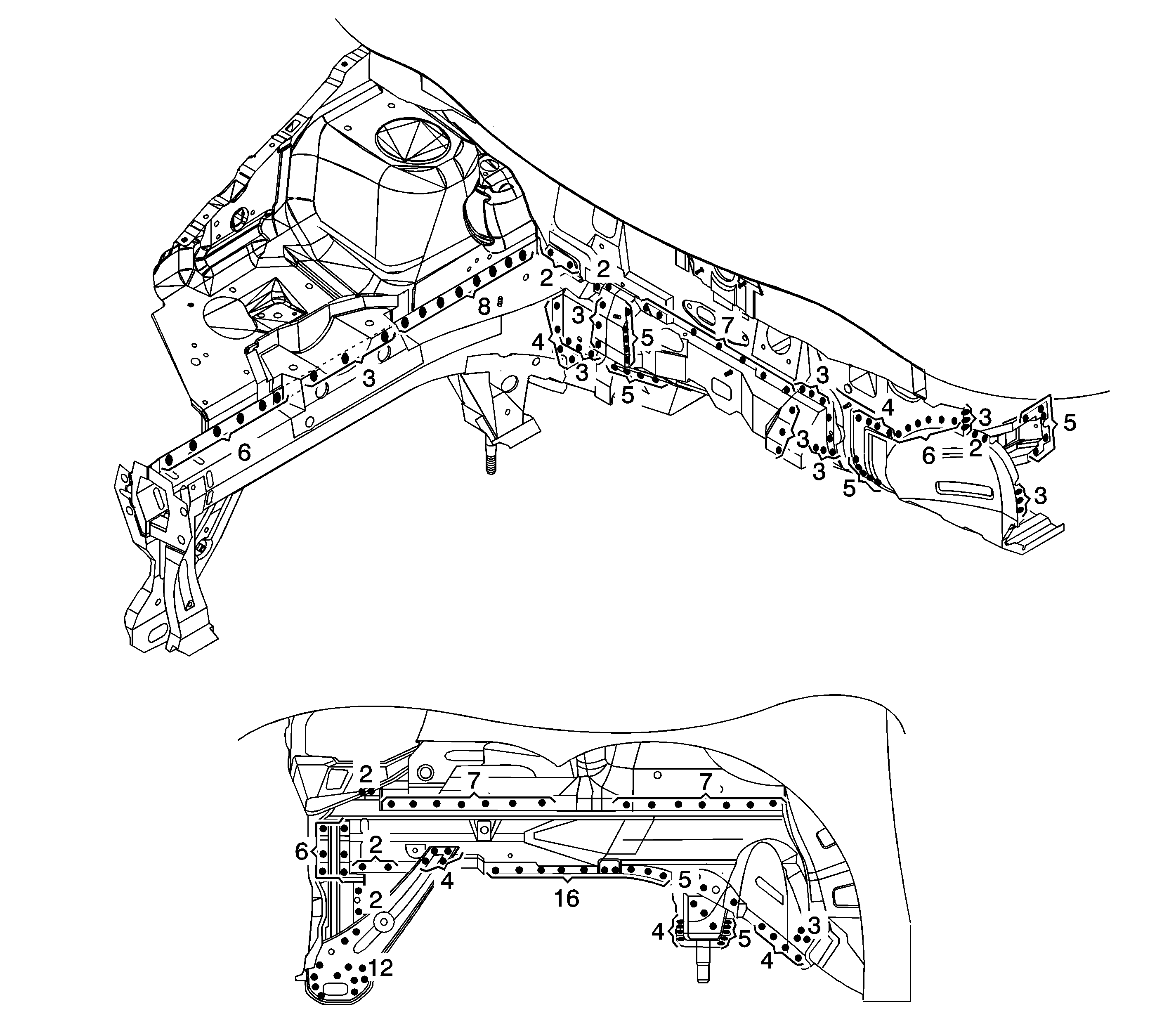
Tie Bar
The front longitudinal is joined to the wheelhouse and front panel, it forms the base for the front suspension, engine, transmission and others. Therefore, replacement of the component affects the front wheel alignment and maintains the rigidity of the front section. When assembling it, either use a jig or follow dimensions on the body repair chart for positioning. It must be welded carefully.
Important: The number of spot welds needed in each location is shown in illustration.
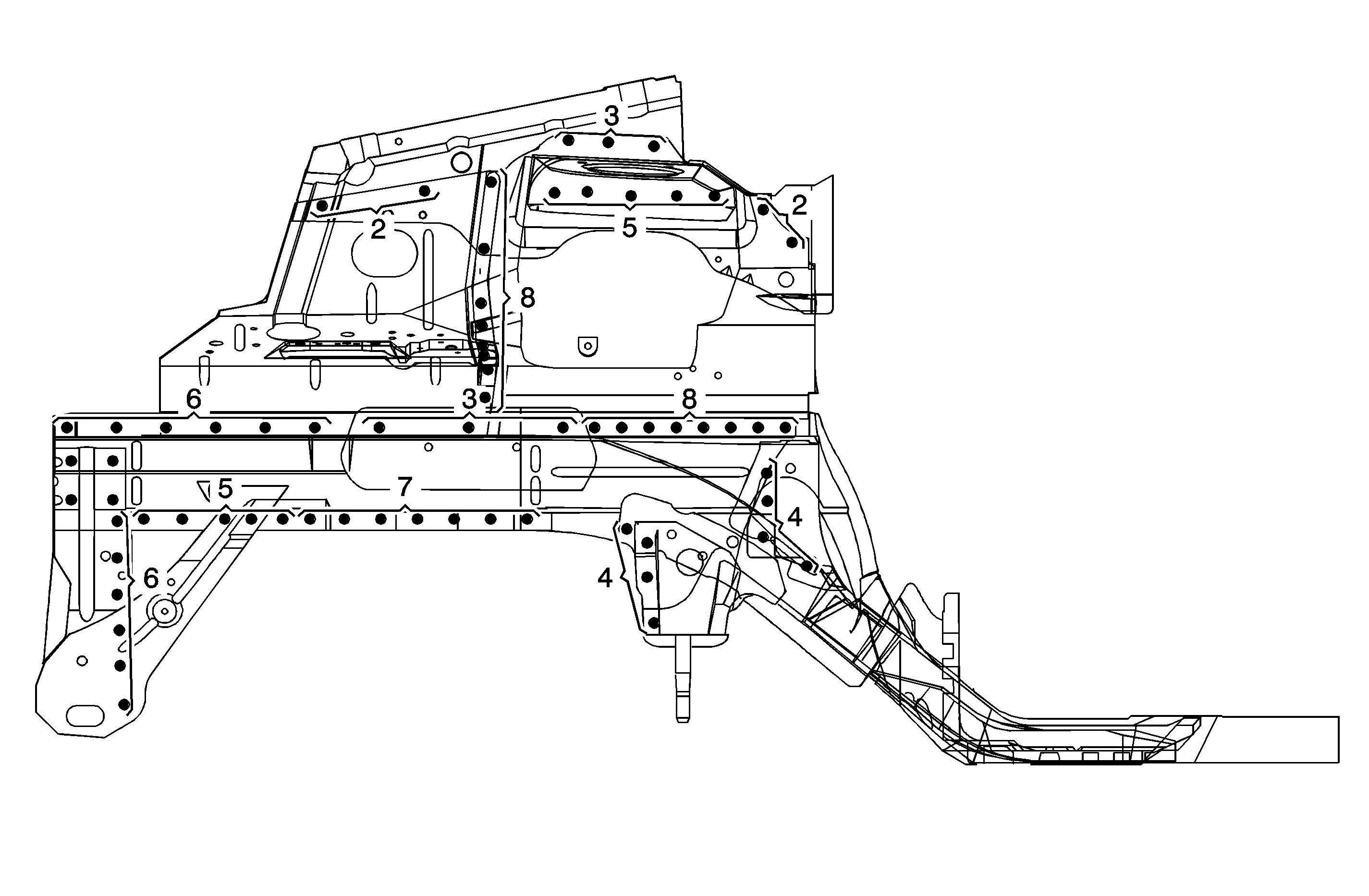
Hinge Pillar Body - Sectioning (Front)
The front pillar area is part of the frame door opening panel. It's connected to the roof, windshield, door hinges and floor frame and is important as a support for the front side of the cabin. Connection of the front pillar determines the position of the windshield and front door. Align the fender, door and windshield while the front pillar is temporary mounted, and check the clearances and level differences.
Important: The number of spot welds needed in each location is shown in illustration.
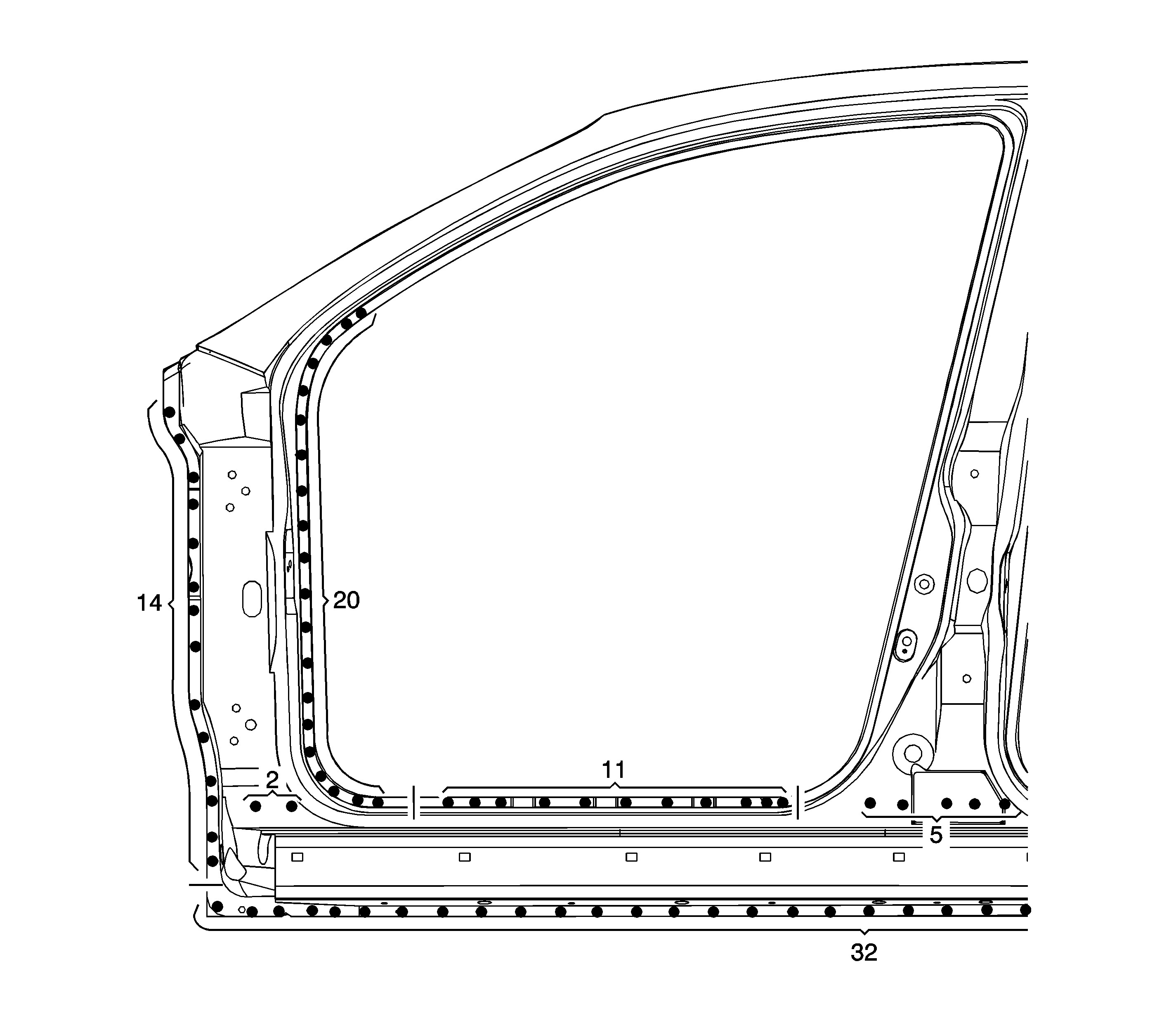
Roof Panel - Outer
Deformation of the roof panel is highly noticeable in terms of the vehicle's outer appearance. Before replacing the roof, make sure that the body is horizontal. Before welding the roof panel, adjust the frame door opening flanges so that they contact the roof panel. Pay particular attention to twists and parallelism.
Important: The number of spot welds needed in each location is shown in illustration.
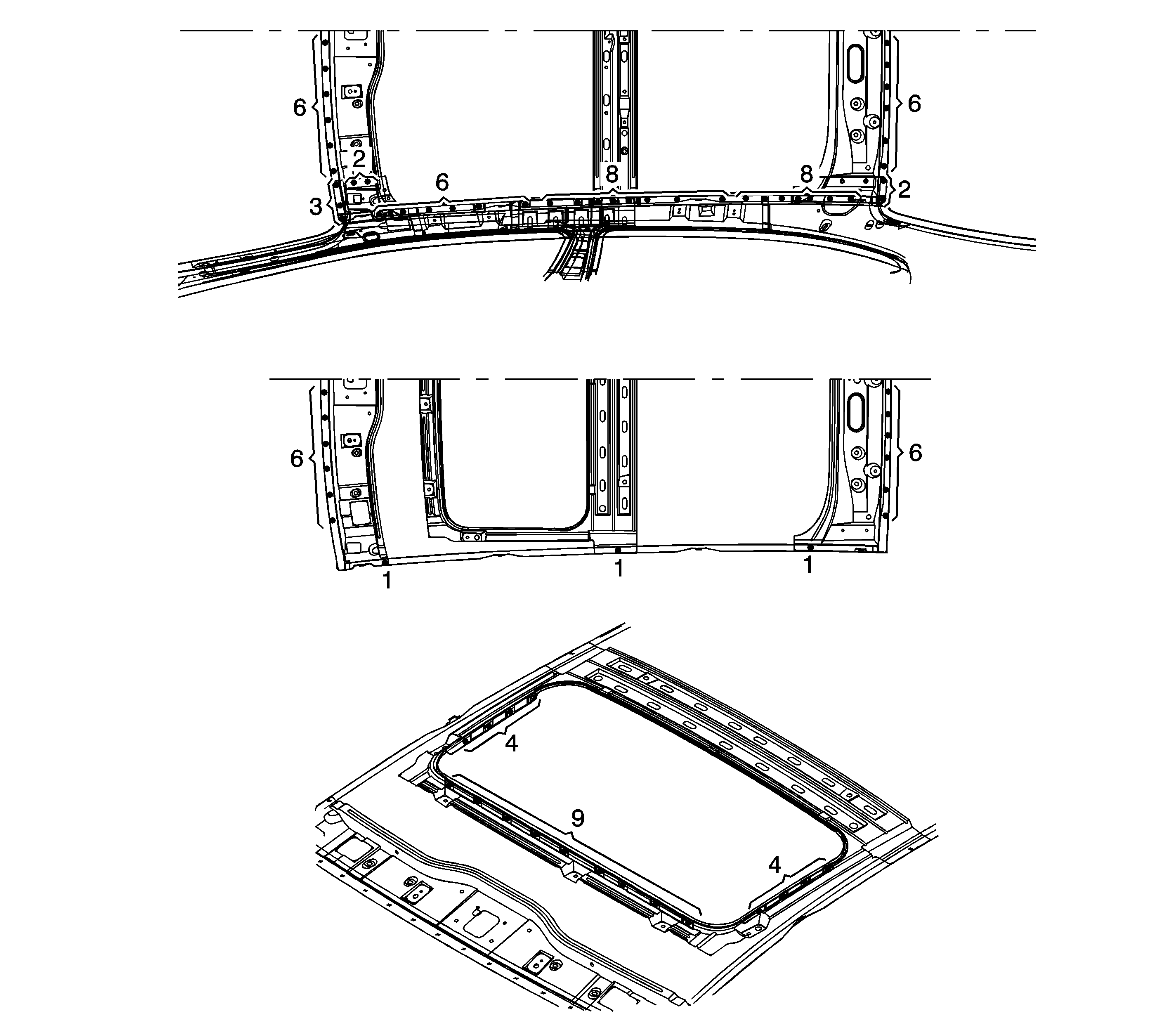
Body Rear End Panel
The back panel is joined to the side panel outer, rear extension longitudinal and extension rear floor. It forms the base for the rear combination lamps and other parts and maintains the rigidity of the rear body. Pay particular attention to twists and parallelism and check mounting of related parts when welding.
Important: The number of spot welds needed in each location is shown in illustration.
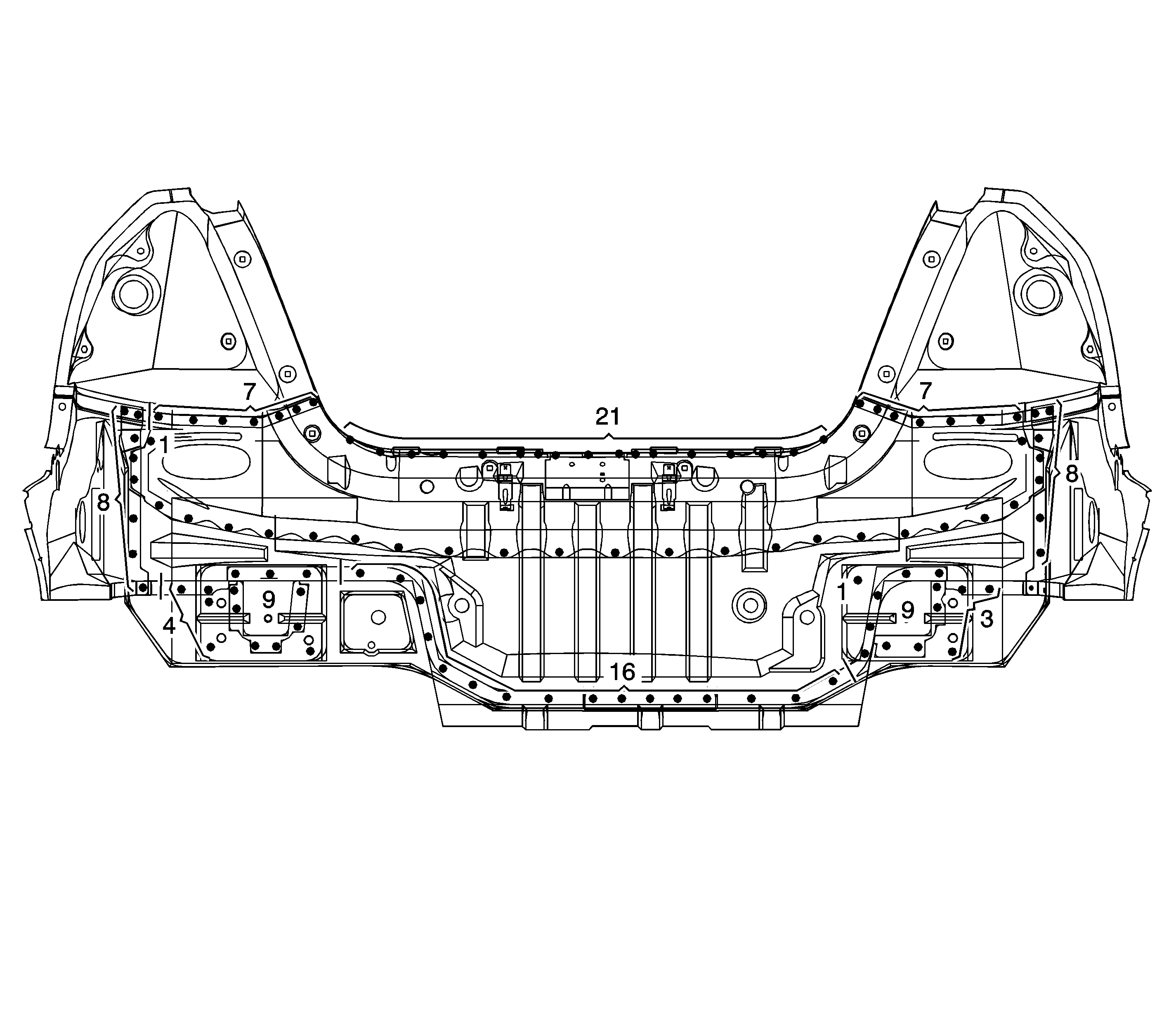
Rear Compartment Floor Panel Sectioning
The rear floor panel is the base of the rear body and it is critical for the rigidity of the rear body. During replacement, refer to Dimensions - Body to determine the position to set the rear floor properly.
Be sure that the rear floor is not bent or deformed. Weld securely to maintain the rigidity of the rear body.
Important: The number of spot welds needed in each location is shown in illustration.
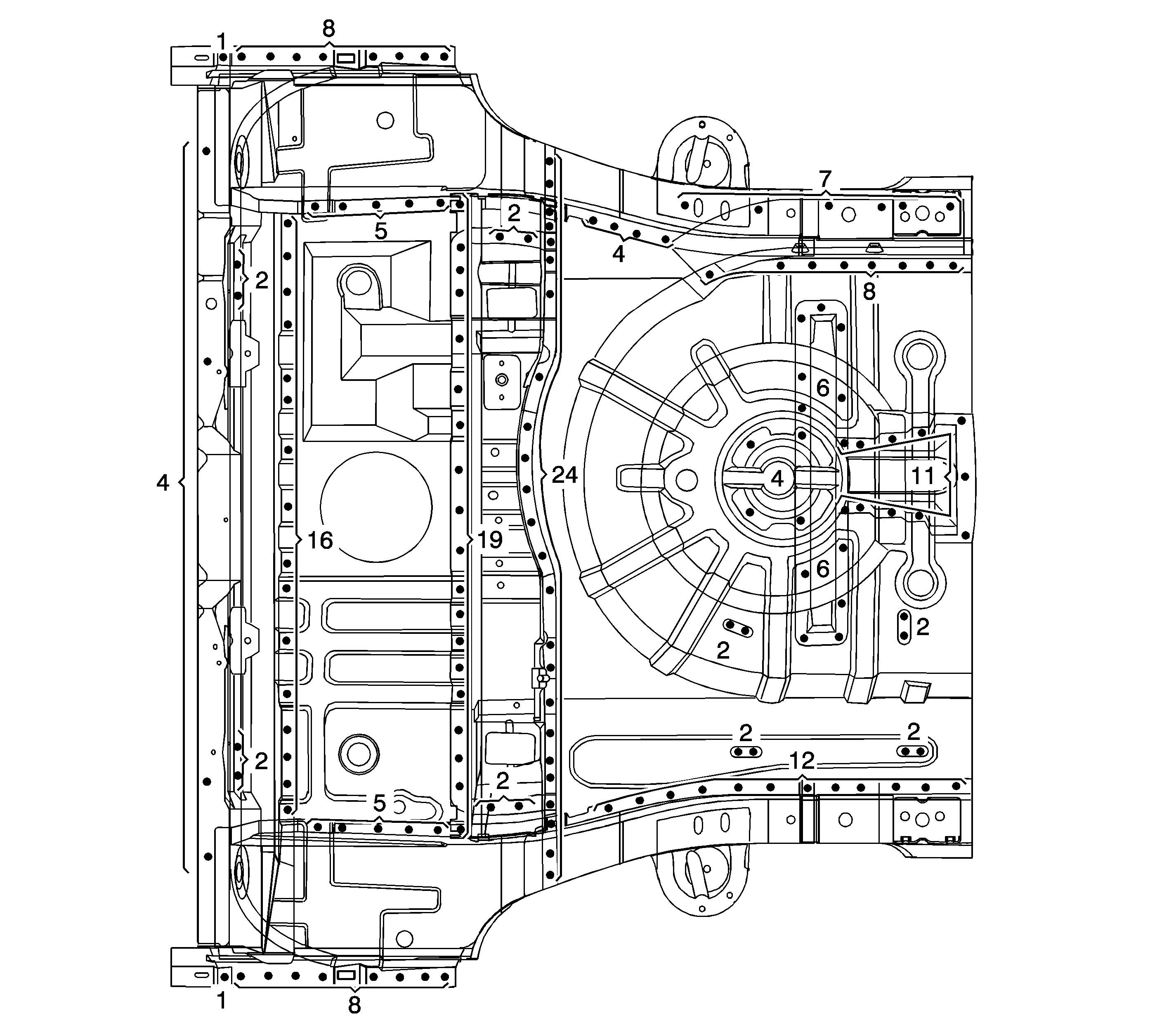
Pillar Lock Front Door Sectioning - Outer
The frame door openings consist of frame door area and side outer area. It forms the base for the front, rear doors and other parts and maintains the rigidity of the doors and roof. The frame door opening area should, depending on the degree of damage, be repaired as much as possible rather than replaced. (Repair by pulling out)
Important: The number of spot welds needed in each location is shown in illustration.
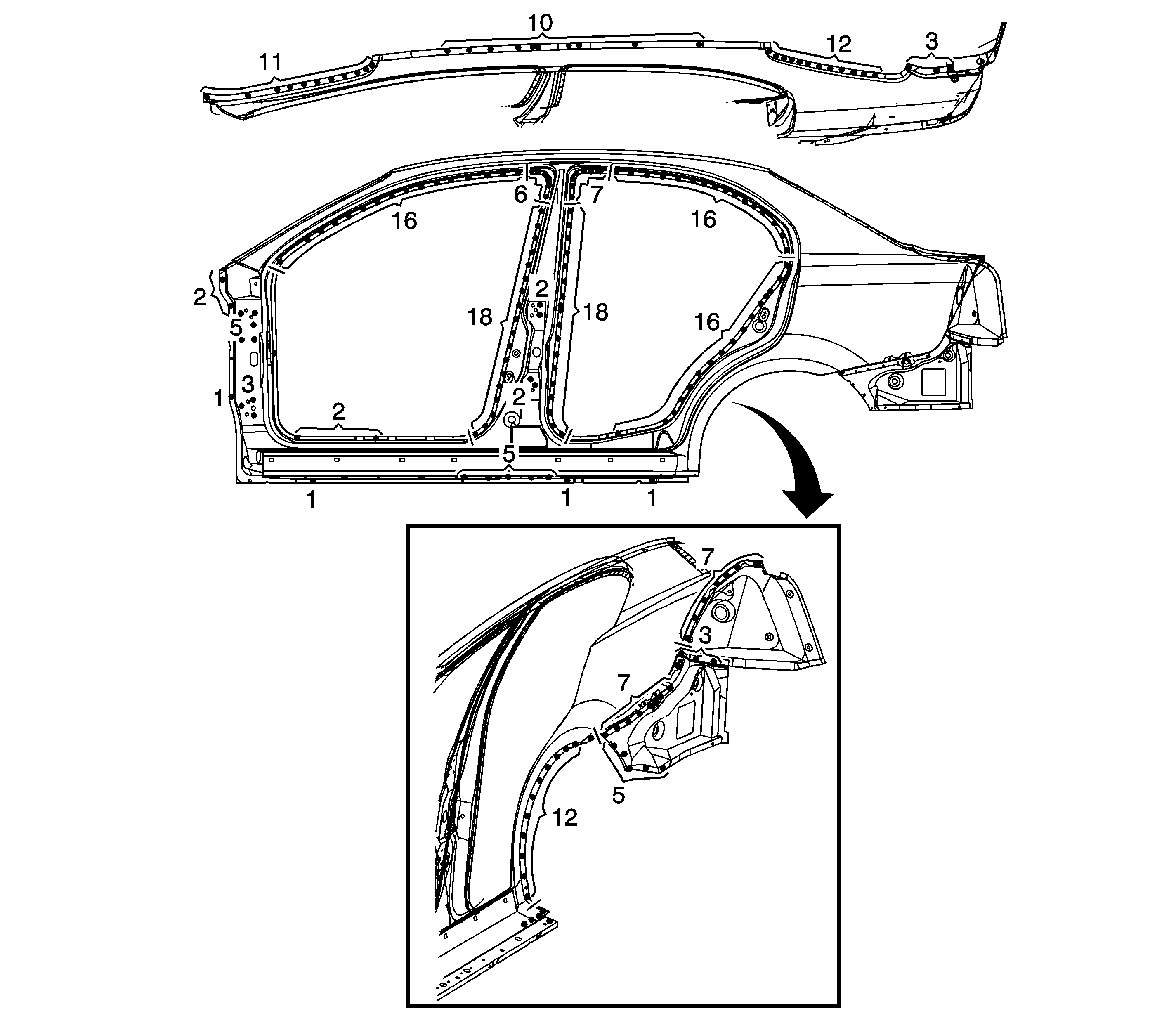
Quarter Panel Sectioning - Outer
The side panel outer consists of side outer area and frame door area. The side outer area is a conspicuous part of the outer appearance of the vehicle. It is especially important for the body line continuing from door. Therefore, pay particular attention to it when conducting work. This part must be aligned with the rear door, trunk lid, rear glass and other parts.
Important: The number of spot welds needed in each location is shown in illustration.
